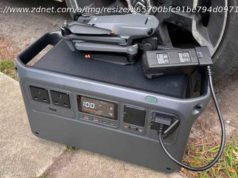More organizations are leveraging data centers of excellence to organize their data talent. Find out what a data center of excellence is and how you can implement one for your team.
Join the DZone community and get the full member experience.
Will Larson (writer of « An Elegant Puzzle » – recommended read) may have said it best when he wrote that one of the best kinds of reorganization is the one you don’t do.
However, data leaders inevitably reach a point where, due to team growth or evolving business demands, things just don’t work. Faced with these challenges, data organizations may swing back-and-forth between centralized vs. decentralized organizational structures until they achieve the right balance.
Overly decentralized teams are plagued by redundancies and uneven standards, while centralized teams are often looking to become more agile and aligned with the business. It can feel like a devil’s bargain, trading one set of problems for another.
So if the best type of reorganization is the one you don’t do, the second best reorganization is the one that leverages a data center of excellence and central data platform to mitigate the risks inherent with both extremes. Data teams at Freshly, Sanne Group, and others are deploying data centers of excellence.
In this article, we will review the most common data team organization structures and then dive into why data centers of excellence are becoming cool again, and best practices for deployment.
The compact car– This is usually the best starting point, especially for small teams, as it connects the work of the data platform engineers to their most important partners, the data analysts and data scientists. Data leadership can prioritize the most critical structural work, such as migrating to the cloud or enriching core product data, while unleashing teams of analysts and data scientists on the most impactful projects across the business.
The best mid-size vehicle – Once you have critical mass, data leaders often deploy individuals or teams into an embedded structure within business units or product teams (“spokes”), while managing the work standards, skill and career development via a center of excellence model.
The SUV – This is common in large enterprises, where business units have historically hired and deployed specialized analytical talent. A data platform initiative will commonly require a significant shift away from siloed operations in order to unlock new business opportunities from interoperable data, commonly framed as a data mesh or data fabric.
The driving force behind the data center of excellence is the power and extensibility of the modern data platform; not just the data warehouse, but the foundation on which your data teams can build analytical data products, provide self-service access to data, run experiments, and tailor product or marketing experiences.






